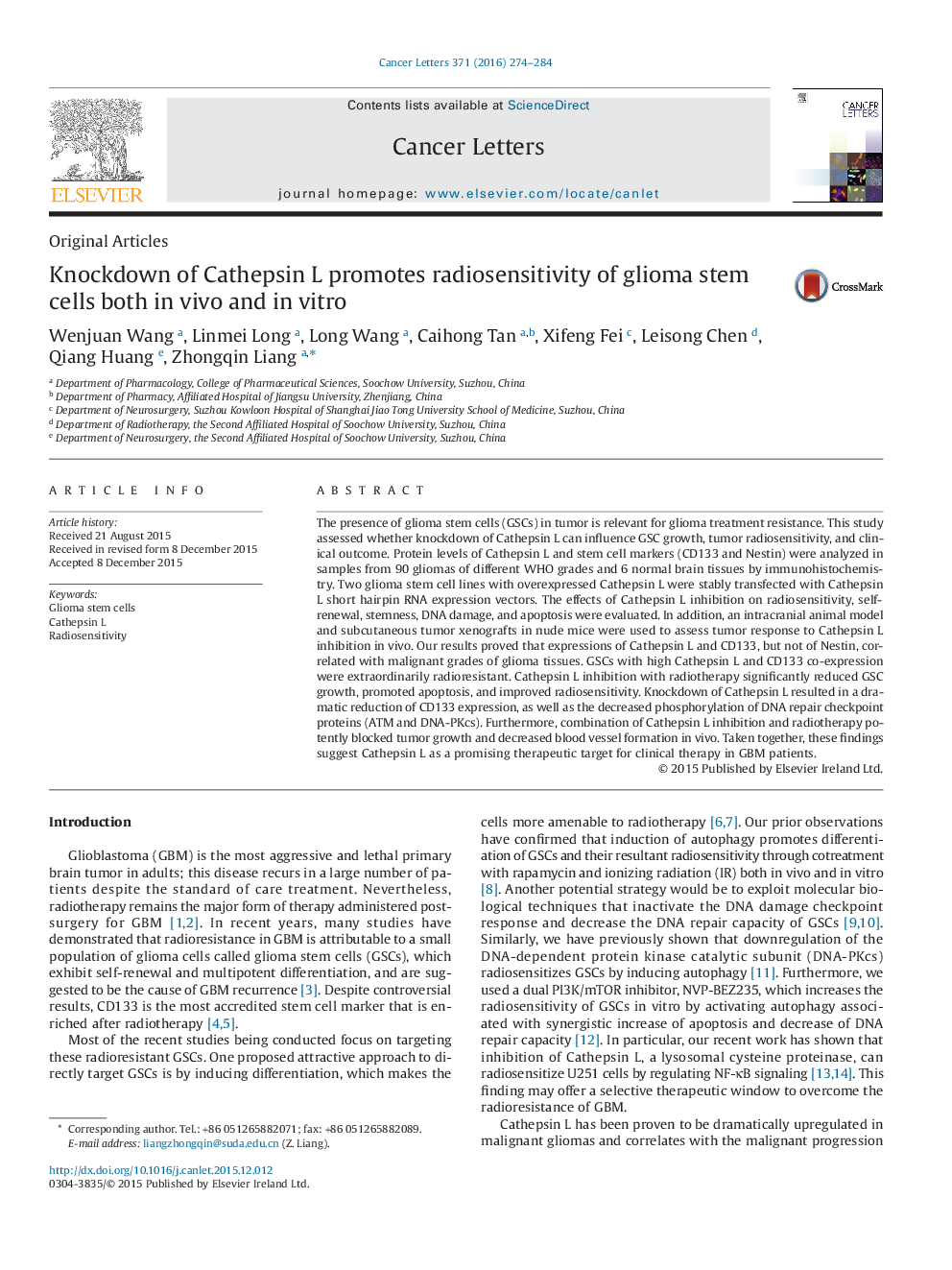| Article ID | Journal | Published Year | Pages | File Type |
|---|---|---|---|---|
| 10899430 | Cancer Letters | 2016 | 11 Pages |
Abstract
The presence of glioma stem cells (GSCs) in tumor is relevant for glioma treatment resistance. This study assessed whether knockdown of Cathepsin L can influence GSC growth, tumor radiosensitivity, and clinical outcome. Protein levels of Cathepsin L and stem cell markers (CD133 and Nestin) were analyzed in samples from 90 gliomas of different WHO grades and 6 normal brain tissues by immunohistochemistry. Two glioma stem cell lines with overexpressed Cathepsin L were stably transfected with Cathepsin L short hairpin RNA expression vectors. The effects of Cathepsin L inhibition on radiosensitivity, self-renewal, stemness, DNA damage, and apoptosis were evaluated. In addition, an intracranial animal model and subcutaneous tumor xenografts in nude mice were used to assess tumor response to Cathepsin L inhibition in vivo. Our results proved that expressions of Cathepsin L and CD133, but not of Nestin, correlated with malignant grades of glioma tissues. GSCs with high Cathepsin L and CD133 co-expression were extraordinarily radioresistant. Cathepsin L inhibition with radiotherapy significantly reduced GSC growth, promoted apoptosis, and improved radiosensitivity. Knockdown of Cathepsin L resulted in a dramatic reduction of CD133 expression, as well as the decreased phosphorylation of DNA repair checkpoint proteins (ATM and DNA-PKcs). Furthermore, combination of Cathepsin L inhibition and radiotherapy potently blocked tumor growth and decreased blood vessel formation in vivo. Taken together, these findings suggest Cathepsin L as a promising therapeutic target for clinical therapy in GBM patients.
Related Topics
Life Sciences
Biochemistry, Genetics and Molecular Biology
Cancer Research
Authors
Wenjuan Wang, Linmei Long, Long Wang, Caihong Tan, Xifeng Fei, Leisong Chen, Qiang Huang, Zhongqin Liang,
